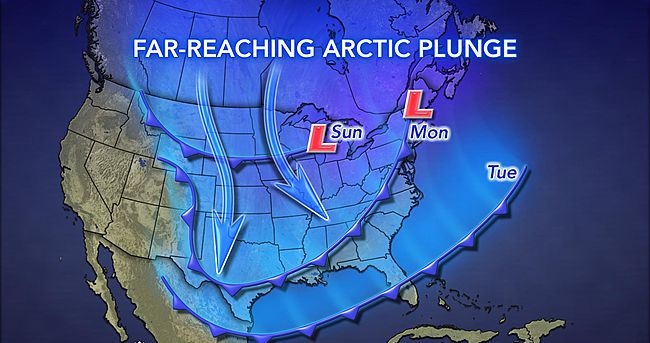March 19, 2018

Bad news for Facebook may have been a catalyst for Monday's market meltdown, but analysts say there are plenty of reasons for selling to continue, not the least of which is an atmosphere of uncertainty being created by the White House.
March 19, 2018

Bad news for Facebook may have been a catalyst for Monday's market meltdown, but analysts say there are plenty of reasons for selling to continue, not the least of which is an atmosphere of uncertainty being created by the White House.
Fears of a global trade war tops the list of worries from the Trump administration, but analysts also say the personnel shakeups and concern over the ongoing Russia investigation, including whether President Donald Trump would fire the special prosecutor, are also hanging over the market.
On top of that, the economy seems to have lost some oomph. Economists no longer see 3 percent growth forecasts for the current quarter. Recent real estate and retail sales data raise questions about what is going on with the consumer, and there's concern Fed interest rate hikes could slow things down even more.
In the very near-term, investors are looking to the Fed for guidance. The Federal Open Market Committee begins a two-day meeting Tuesday, and will release new economic and interest rate forecasts Wednesday. The Fed is widely expected to raise rates, but the future course of rate hikes is unclear, and analysts say the reaction in stocks could be negative if the Fed expects more than the three rate hikes it currently forecasts for this year.
"We don't see any reason for an abatement of this market pressure coming on before the Fed. After the Fed, we'll have to see what their message is," said Julian Emanuel, head of equities and derivatives strategy at BTIG. "The [White House] personnel turnover at the margin increases uncertainty, and markets dislike uncertainty. There are so many uncertainties right now —politically, economically monetarily."
The Dow was down more than 400 points in afternoon trading, and the S&P 500 was off 1.9 percent, teetering at the psychological 2,700 level. The S&P broke below its 50-day moving average at 2,748 and was still about a dozen points above its 100-day moving average, at 2,688.
U.S. interest rates, meanwhile continued to rise Monday. Typically, Treasury yields fall when stocks sell off, because investors seek safety in the bond market. Instead, the 2-year yield reached a new nine year high of 2.32 percent early Monday, and the 10-year yield also rose, to around 2.85 percent.
Facebook was the far bigger weight on the market than rising rates, but analysts said Trump also spooked the market. Analysts pointed to a weekend flurry of tweets from the president attacking the integrity of Special Prosecutor Robert Mueller's investigation.
"Trump is one tweet away from scaring the hell out of the market," said Art Cashin, UBS's director of floor operations.
The fact that it was Facebook and tech that led the decline hit right at the sweet spot of the market. Tech was the sector that led the market off its February lows, and the Nasdaq was the only index that had recovered to the point where it was again setting new highs. Facebook, and other members of FANG — Alphabet, Amazon and Netflix — were an even bigger driver.
"The FANG thing is the biggest worry, that all these high tech stocks which were potentially subject to some form of regulation are now wide open to some form of regulation," Cashin said.
Facebook's stock tumbled after news this weekend that Cambridge Analytica obtained data on millions of its users. The firm had worked on Facebook ads for the Trump campaign. Facebook's trouble spread across tech, and the sector led the selling.
"When that rolls over it does take the market over. Unfortunately, we're in no man's land on the S&P 500. We broke the 50-day and the 100-day is not within shouting distance," said Art Hogan, chief market strategist at B. Riley FBR. "That's what we bounced off of the last time. That may be enough for people to say we're retesting the lows. When you break the 50-day, it tends to be self-fulfilling." The S&P hit an intra-day low of 2,532 during February's selloff.
Facebook, after Monday's 7 percent plunge, was down 2.4 percent year to date, but Netflix was still up 61 percent while the S&P was up just 1 percent year-to-date.
Nasdaq was hit hard Monday, with the tech-driven composite down 2.4 percent, at about 7,300.
Scott Redler, partner with T3Live.com said tech signaled it was ready for a sell off last week, when the PowerShares QQQ Trust, an ETF representing the Nasdaq 100, had a negative outside day, meaning it hit a lower low than the prior day, and then remained weak. But Facebook stock had looked to be strengthening ahead of the surprise weekend news.
Emanuel said the tech sector is also in the cross hairs of the trade issues and the Fed. The Trump administration has taken aggressive steps, slapping new tariffs on steel and aluminum and threatening to put tariffs on a range of Chinese goods. Analysts fear a retaliatory backlash that will hurt the sale of U.S. goods in overseas markets and potentially even slow global growth if it becomes widespread. Traders were watching headlines from Argentina Monday, where G-20 finance ministers were critical of U.S. tariffs.
"A higher interest rate environment should punish higher multiple stocks relatively more. They're also the biggest exporters. The average technology company is well in excess of 50 percent of an exporter, as opposed to the rest of the S&P 500," Emanuel said.
James Paulsen, the Leuthold Group's chief investment strategist, said the market's reliance on tech is in some ways similar to tech before the bubble burst in 2000. "What happens in a bull market is everyone evenutally tilts toward aggressive and avoids defensives…Everyone is going into the same popular stocks that have worked and avoided the ones that haven't, and everyone is riding the same wave," he said.
Paulsen expects choppiness to continue until valuations come down to more normal levels. He said there could either be a quick panicky sell off or the market could trade sideways with volatility for months.
"Right now, it puts you at 2,300 or below," he said. But if earnings rise as expected, by year end, the S&P should be at about 2,550 then.
Courtesy/Source: CNBC











































































































